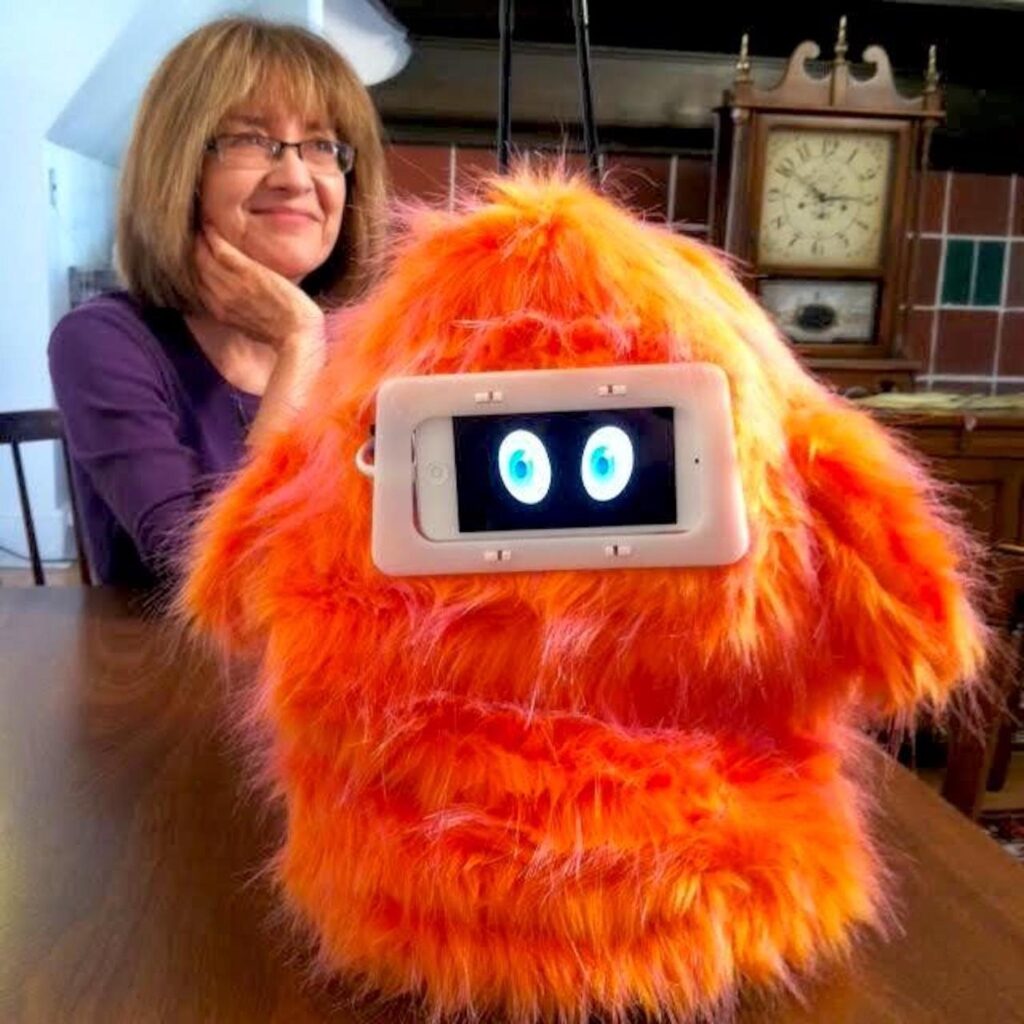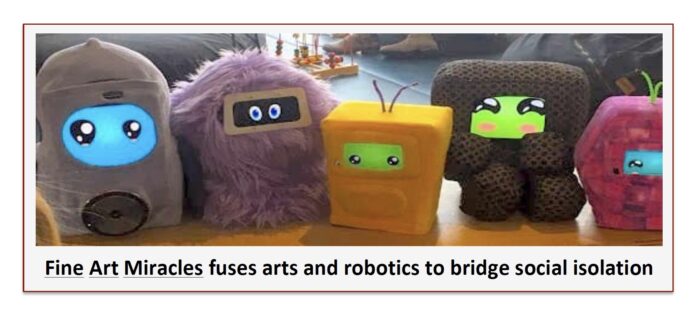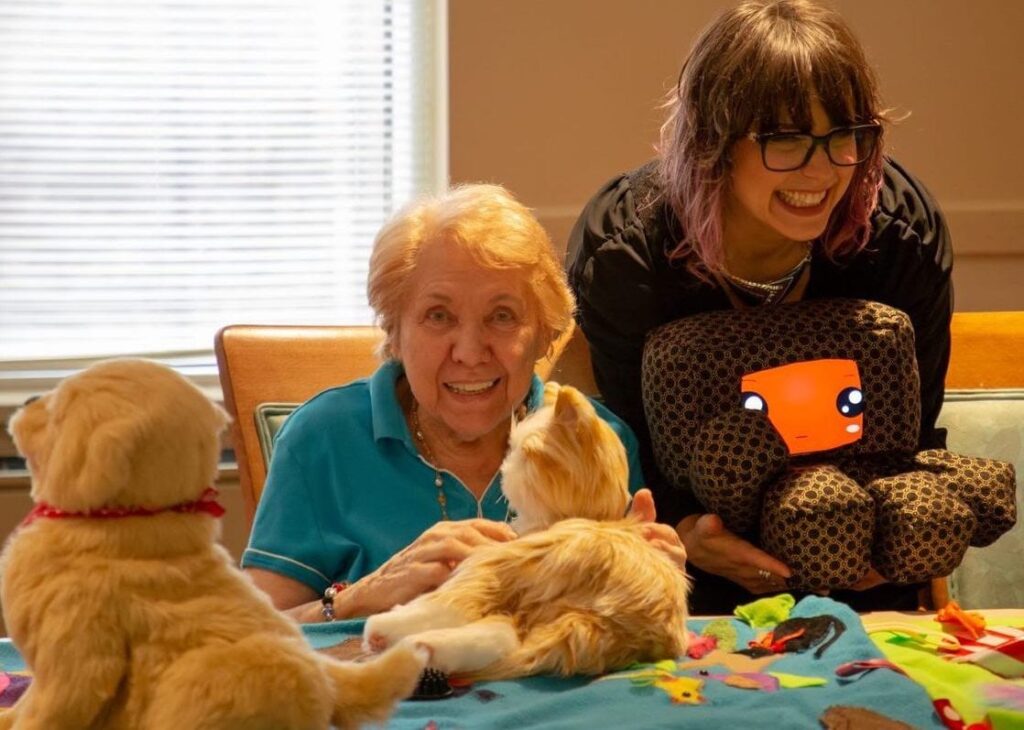Fine Art Miracles fuses arts and robotics to bridge social isolation
_________________________________________________________________________
YOU CAN ONLY walk by the same Wilkinsburg nursing home for so many weeks before you finally stop in and ask to teach an art project to the residents.
That was the thinking of Tess Almendarez Lojacono back in the mid-1980s, after earning her BFA in painting from Carnegie Mellon University.
And it led to her presen t career as founder/CEO of Fine Art Miracles (FAM), an innovative Pittsburgh nonprofit that delivers a diverse array of personalized art services to a wide range of clients from pre-schoolers to dementia sufferers.
t career as founder/CEO of Fine Art Miracles (FAM), an innovative Pittsburgh nonprofit that delivers a diverse array of personalized art services to a wide range of clients from pre-schoolers to dementia sufferers.
“I had a painting studio and had been exhibiting at local galleries,” she recalls, “but I also felt I should do something more with my art. One day, it struck me that I wanted to know who the people were living inside this building.
“What do they do all day? And would they like to try doing some art?”
The facility’s activity director welcomed her, and Tess soon discovered her talent for using art to bring people out of their shadows and into the light of friendship and renewed self-regard.
FAST FORWARD THREE DECADES, and Fine Art Miracles today offers artmaking experiences to an expanding network of over 6,000 people in Pennsylvania and New York including the elderly, veterans, children and adults with intellectual and developmental disabilities, children and adults on the autism spectrum, economically challenged families and the homeless — “basically,” says Tess, “we serve anyone experiencing difficulty with the challenges of daily living.”
For many Pittsburghers, those challenges have been increased by the current COVID-19 emergency, and FAM teachers have been unable to make their usual in-person visits.
“There are close to 48,000 elderly in the city of Pittsburgh who have been sheltering in their homes during the pandemic,” says Tess. “The isolation they’re experiencing is often just as deadly as the virus.”
 In response, FAM developed ART2GO, a series of art lessons-in-a-box showing how to recreate the style of famous artists. Along with step-by-step guides and all necessary materials for up to 20 participants, each package contains artist biographies, examples of their work and completed project examples to engage and inspire.
In response, FAM developed ART2GO, a series of art lessons-in-a-box showing how to recreate the style of famous artists. Along with step-by-step guides and all necessary materials for up to 20 participants, each package contains artist biographies, examples of their work and completed project examples to engage and inspire.
FAM enlisted the aid of 412 Food Rescue to include ART2GO packages with their normal food deliveries.
It’s a partnership that nourishes body and soul, and FAM has established an online fundraising campaign with the ioby.org civic crowdfunding group to raise $10,000 for at least 100 new ART2GO packages.
With a deadline of Dec. 1, 2020, the campaign has so far raised half the amount needed. Tess is confident the goal will be met, and a host of Pittsburgh seniors will enjoy the company of colorful new friends named Klimt, Rivera, Warhol, Hopper, Esch, Miro, Gauguin, Avery and more.
The ART2GO concept is an extension of FAM’s longstanding interest in innovation. In 2012, Tess won the Experienced Dreamers Prize, a competition sponsored by a coalition of Pittsburgh foundations seeking the best idea for a new business, philanthropy, or artistic endeavor.
Fine Art Miracles was already providing classes in art, music, dance and movement therapy, along with multi-sensory sessions for children and adults on the autism spectrum.
Now, “socially assistive agents” (AKA robots) would enter the mix.
“I learned that industrial designer Aubrey Shick at Carnegie Mellon University’s Robotics Institute was looking for someone doing art therapy with kids on the autism spectrum,” says Tess. “It was a pilot research program that would take her robot prototype out of the lab into a real-time learning environment. I volunteered, of course!”
Class, meet your new teaching assistant, Romibo.
 Designed for therapy with children who have special needs, Romibo is a peer-based educational and emotional relationship robot — a PEERbot — in effect, a specialized fuzzy puppet supporting social learning and play.
Designed for therapy with children who have special needs, Romibo is a peer-based educational and emotional relationship robot — a PEERbot — in effect, a specialized fuzzy puppet supporting social learning and play.
The teacher or facilitator completely controls the robot and can direct its responses to the individual or class, from detailed conversations to games like I Spy and Simon Says.
Romibo was an instant hit with FAM’s kids and was introduced to senior clients, with whom the machine’s compatibility and versatility were readily apparent.
“A robot of this type can be programmed to call ‘Bingo!’,” says Tess. “He can guide art lessons and exercise, read to a group, ask questions, remind you to take your meds.”
Most importantly, she asserts, social robots bridge the learning gap and reach people who can’t be reached in other ways, such as children who have been ridiculed or are tired of being corrected, people with Alzheimer’s or dementia.
“The robot teacher is patient and non-judgmental. He will listen to the same story a thousand times, will repeat himself as often as necessary. A person can choose to participate with the robot any way they want. Whatever you say or do is good. You can’t make a mistake.”
The organization’s teaching roster now includes PEERbots Hugo, Migo, Scout, Moxie, Misty and Kuri — each carefully programmed to advance FAM’s mission of using art to unlock and nurture a human being’s innate creativity. Any human being at all.
It’s a result Tess Almendarez Lojacono might not have imagined when she was first strolling through Wilkinsburg looking to do “something more” with her art.
But what are a couple decades in Robot Years?














